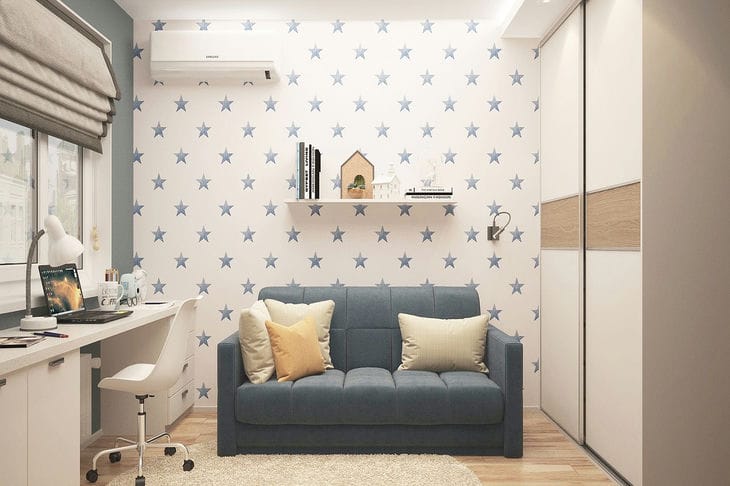The first thing to consider when decorating a child's room is the interests of the child himself. Talk to him and find out what colors, themes and characters he likes.
For example, if your child loves cartoons about pirates, you can create a marine theme with bright rugs in the form of sea waves, pirate flags and pillows with images of ships.
Create functional zones
Divide the room into functional zones so that your child can comfortably perform different types of activities, says Yulia Tychino.

For example, create a play area with shelves for toys, a table and chairs for drawing and construction sets, and also complete a reading area with a comfortable chair and bookshelves.
Provide adequate storage
Children have a lot of toys, books and things, so good storage is a must.
Use functional furniture pieces such as drawers, cabinets, shelves and baskets to organize the space and provide storage for all of your child's belongings.
You can also use colored bins or baskets to sort toys into categories and make cleanup easier.
Consider safety
Safety is an important aspect when decorating a child's room. Make sure all furniture and accessories are safe for children.
Secure shelves and cabinets to the wall to prevent them from falling over. Choose suitable floor and wall materials that are easy to clean and resistant to damage.
Also pay attention to electrical outlets and make sure they are out of reach of children or covered with protective covers.
Use bright and stimulating colors
Colors can have a significant impact on a child's mood and emotional state. Use bright and vibrant colors in a child's room to create a cheerful and stimulating atmosphere.
Different colors can also help develop certain skills. For example, green promotes calmness and concentration, while red promotes activity and energy.
Add development elements
Design the room in a way that will support your child's development.
Include educational toys, board games, books and other materials in the interior that will stimulate his mental and physical development.
For example, you can hang a drawing board or a magnetic board on the wall to develop creative skills.
Let me express my individuality
A child's room is a place where your child can express his individuality and creativity.
Let him participate in the room design process, choose some of the decor or draw his own pictures to hang on the wall. This will help create a space that reflects his unique personality and interests.
By following the practical tips above, you can create a space that inspires your child to play, learn, and grow.
Remember that the main thing in decorating a child's room is to create a comfortable and safe environment that will promote your child's joy and growth.
The importance of choosing a color for the bedroom has been reported previously.









